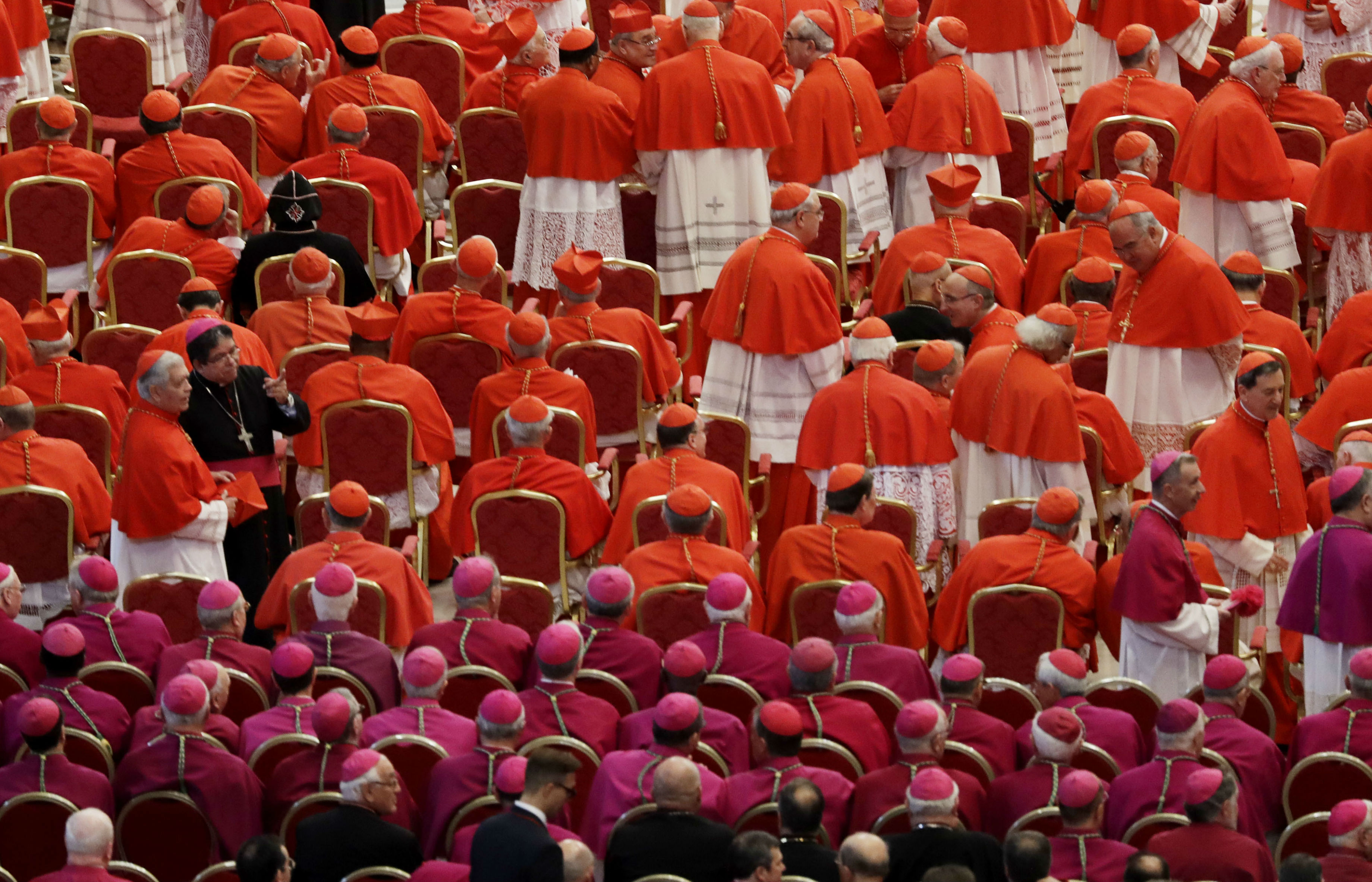On Saturday Pope Francis placed red hats on the heads of seventeen new cardinals, inducting them into the world’s most exclusive club where members are typically known as Princes of the Church.
Traditionally, being created a cardinal has been all about prestige - a moment when a cleric is elevated to the highest ranks of the Church.
Not anymore.
Francis has repeatedly stressed that being a cardinal is not about status but service and has now made it his mission to give red hats to the unambitious, pastorally-minded men serving in some of the most far-flung and dangerous parts of the world.
In doing so he is tapping into the ancient tradition of what a cardinal is. It starts with the title based on the latin for “cardo” - meaning hinge; for Francis, the men in red are links or bridges between Rome and the local churches. Given Catholicism is now fast shifting to the global south, where the faith is growing fastest, the Pope is ensuring that the men who lead the universal Church reflect this.
“I like people to see the universality of the Church in the college of cardinals, not just the centre, let’s say Europe, but cardinals from everywhere”, Francis said earlier this year when explaining how he made his choices.
Today the Central African Republic, Bangladesh, Papua New Guinea, Malaysia and Lesotho received their first cardinals, with the same happening at the last consistory with Cape Verde, Tonga, Burma and Panama.
But there is another more fundamental notion of a cardinal the Pope is looking to and it’s this: he must be prepared to give his life for the faith, something symbolised by the wearing of scarlet-red robes, a sign of the blood to be shed.
In the formula of creation to make new cardinals, Francis called on them to “be fearless witnesses to Christ and his Gospel in the City of Rome and in faraway regions”. This was particularly apt for three of those receiving the red biretta today.
One of them is the papal ambassador to Syria, Cardinal Mario Zenari, who is one of the few western diplomats still living in Damascus and a man whose life is at risk from the bombs being dropped in the country’s protracted civil war.
The 70-year-old Veronese diplomat’s presence in Syria is a sign of hope for peace. He dedicated his red hat on Saturday “to the many children who are suffering, for the many poor people who are paying the consequences of this tremendous conflict”.
Then there is Cardinal Dieudonné Nzapalainga, the Archbishop of Bangui, in the Central African Republic, a country torn apart by a long-running conflict between Christian and Muslim militias. The 49-year-old, and youngest wearer of the red hat, is famed for grappling with a knife-wielding militiaman who was threatening to kill a Muslim child. He impressed the Pope thanks to his collaboration with Muslim and other Christian leaders.
Hundreds of his fellow countrymen were in Rome to witness him receiving the red hat, including his friend of 35 years, Mesmin Koulet-Vickot, who now works for the International Monetary Fund in Washington.
“He can talk with anyone, anybody, Christian or Muslim,” Mr Koulet-Vickot said after the ceremony. “He’s also very pragmatic and well organised.”
Finally, there was 88-year-old Albanian priest, Father Ernest Troshani Simoni, made a cardinal today having been twice condemned to death by his country’s former communist regime and sentenced to decades of hard labour.
When the Pope visited Albania in 2014, he was brought to tears by the priest’s description of his twenty years of imprisonment and torture.
The other tradition Francis highlighted today was the oath of fidelity to be “constantly obedient” to the gospel, the Church and the Pope. This week four cardinals publicly challenged Francis over his landmark family document, Amoris Laetitia, claiming it is spreading confusion. One of them, Cardinal Raymond Burke, suggested the Pope is now teaching error and suggested he might make a “formal act of correction”.
The dispute is over Francis allowing communion to be given in some circumstances to divorced and remarried Catholics, which the protesting prelates believe undermines the sacrament of marriage.
Today, however, the Pope warned of “a virus of polarisation and animosity” seeping into the Church.
“We are not immune from this and we need to take care lest such attitudes find a place in our hearts”, he said today in St Peter’s Basilica, “because this would be contrary to the richness and universality of the Church, which is tangibly evident in the College of Cardinals.”
New Chicago cardinal, Blase Cupich, told me that the Pope wants a discernment and to move beyond a notion where “things are not black and white on documents”.
“That ritual was not only having solidarity and unity but also obedience. There is a new obedience we are called to now, to listen to and be attentive to what the Pope is saying,” he explained.
When asked about the cardinals’ letter challenging Francis, he said: “Remember we are talking about four out of around 200.”
But Francis’ remarks were not simply directed at churchmen but also to the world: he criticised the growing demonisation of outsiders seen in the rhetoric of recently-elected Donald Trump, whom the Pope has clashed with over migrants, and in other populist nationalist parties.
“We see, for example, how quickly those among us with the status of a stranger, an immigrant or a refugee become a threat; take on the status of an enemy,” Francis said.
“An enemy because they come from a distant country or have different customs. An enemy because of the colour of their skin, their language or their social class. An enemy because they think differently or even have a different faith.”
The Pope’s new red hats show something different: that a group of individuals from far flung corners of the earth; from different backgrounds, cultures and customs can come together under one umbrella.
It’s this unity in diversity and willingness to put one’s life on the line that is the criteria for the making of Francis’ cardinals, an ancient tradition he is breathing new life into.




 Loading ...
Loading ...
What do you think?
You can post as a subscriber user ...
User comments (1)
Correct use of the whole school week, including assembly time with a well established curriculum programme, should easily provide 10 RE time. As school principal my weekly planned assembles were timetabled in our 25 hour week curriculum time and so it enabled us to meet legitimate CES requirements. In addition we had year assemblies each morning....our many whole school Masses were planned in accordance with the liturgical year and homilies also dovetailed into this planning.